
Partial Discharge Monitoring System for Switchgear A Partial Discharge
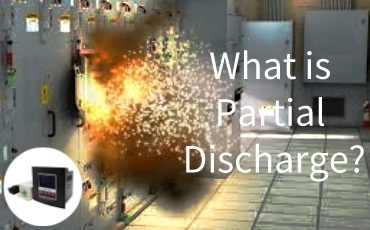
Want to know partial discharge? This article will introduce it from definition, types, cause, happening location, partial discharge detection techniques, damage, and protection.
Partial discharge (PD) is a flashover, which is produced due to a localized electric field greater than the dielectric withstand capability (ie, one part of the insulation cannot withstand electric stress). When PD occurs, the gases become ionized, causing a rapid voltage drop. The remaining current pulse then equalizes the charge in the remaining insulation.
Partial discharge happens due to multiple causes, starts small, always get worse, and leads to flashover. For example, as fhe figure 1 list, when a high-frequency current pulse travels through the insulation capacitance from C1 to C3, if the applied electric field exceeds the withstand capability of C2 but remains below the withstand capabilities of C1 and C3, partial discharge can occur in C2.
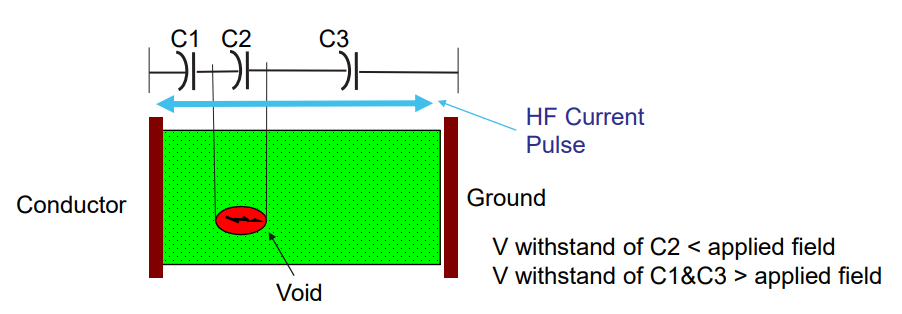
There are 5 common types of partial discharge in the following:
Internal PD
Internal PD (partial discharge) is caused by voids, impurities, defects, or cavities within the solid insulation material, including oil, gas, or other solid liquid dielectrics.
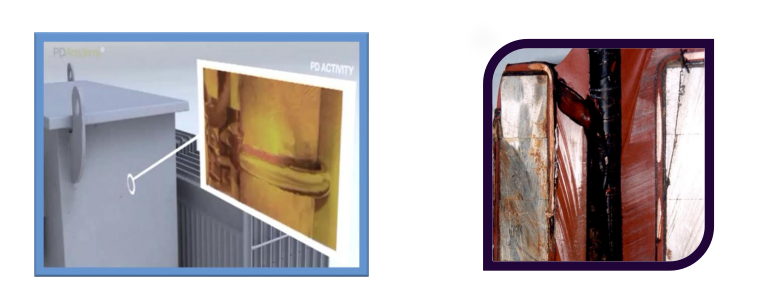
Surface PD
Surface Partial Discharge occurs on the surface of the insulation or at boundary of the different insulation materials, which is caused by contamination, moisture, or surface irregularities. Besides, it usually form treeing and tracking. Contact discharge occurs on floating metal in high field conditions.
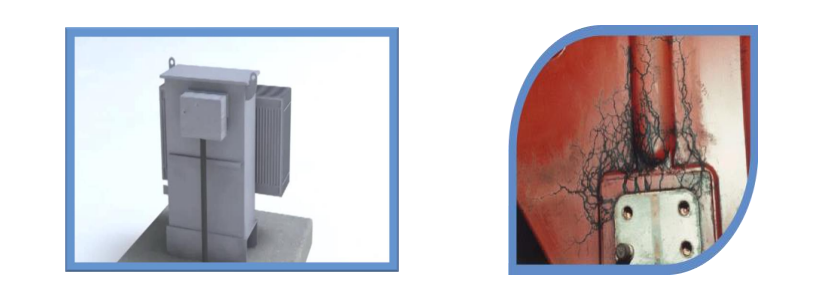
Corona PD
Corona Partial Discharge occurs in a gaseous dielectrics surrounding a conductor such as high-voltage transmission lines or insulators, which is caused by high electric fields at the conductor’s surface.
Treeing PD
Treeing Partial Discharge occurs in solid insulation and is characterized by the formation of tree-like channels. It’s often caused by the degradation of the insulation material due to repeated discharges.
Contact PD
Contact partial discharge refers to the discharge phenomenon that occurs when two conductors with different potentials are in direct contact or close to each other. When the potential difference between the two conductors reaches a certain level, electrons will quickly jump from the high-potential conductor to the low-potential conductor, forming a current, thus generating a discharge phenomenon. It often occurs on floating metal in high field conditions.
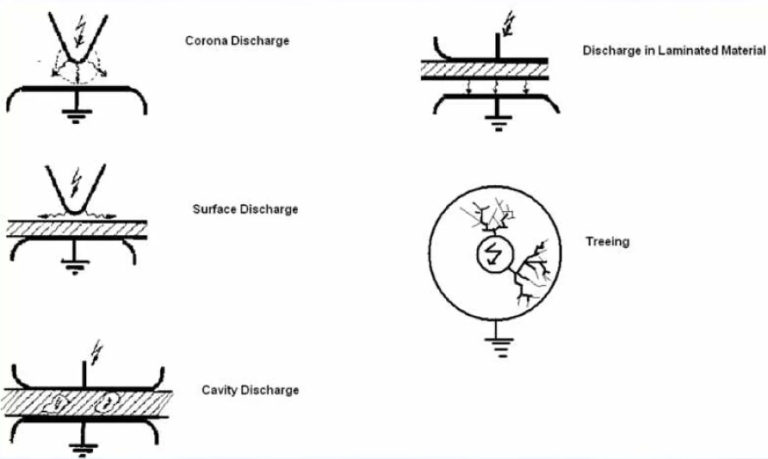
Comparison for different partial discharge types
| Type of Partial Discharge | Location | Cause | Characteristics | Hazards |
| Internal PD | Inside the insulation material | Voids, impurities, or defects within the material | Difficult to detect directly, requires specialized equipment | Erodes insulation, accelerates aging, leads to insulation failure |
| Surface PD | On the surface of the insulation material | Surface contamination, moisture, cracks, or other defects | Visible as faint corona or arcs | Erodes surface, reduces insulation performance, accelerates aging |
| Corona PD | In the gas surrounding a conductor | High electric field at the conductor’s surface | Visible as a purple glow, produces ozone and nitrogen oxides | Energy loss, electromagnetic interference, corrosion of conductors |
| Treeing PD | Inside solid insulation | Microscopic defects or impurities, repeated discharges | Tree-like channels form within the insulation | Severely reduces insulation performance, accelerates aging |
| Contact PD | At the point of contact between two conductors | High potential difference between conductors, poor contact | Sparks or arcs, audible noise | Damages electronic components, electromagnetic interference, fire hazard |
From the types of partial discharge, you may notice that the partial discharge activity is inseparable from gaseous medium, electrical stress, voids or gaps, and elektron. The partial discharge activity usually happens before insulation failure. The main cause of partial discharge are divided into human error, environmental causes, and aging of equipment.
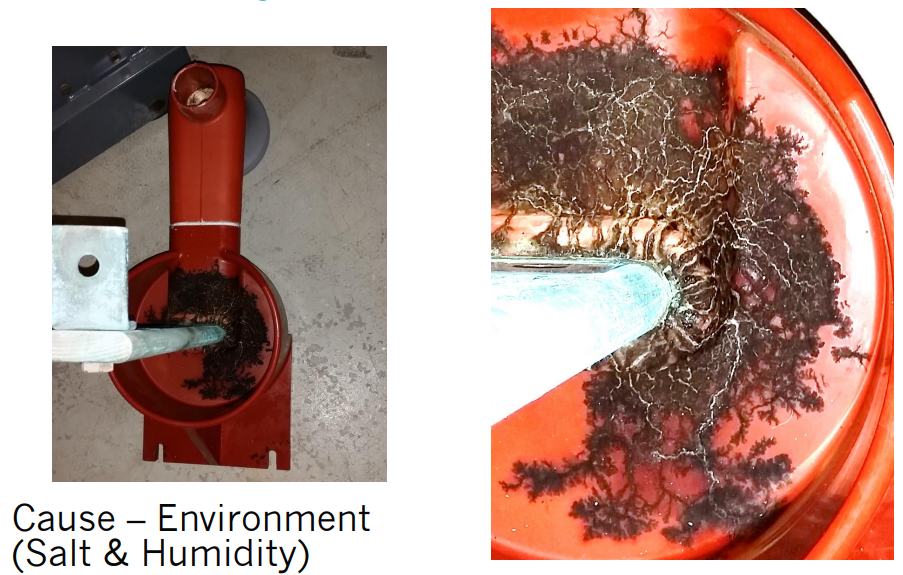
Human error causes PD, which includes surface contamination,poor installation, material manufacturing defects, improper application such as wrong parts for the job, or mechnical damage.
Environmental factor for PD includes temperature and humidity such slat spray or salt fog.
Aging of the insulation will caused PD. For example, electrical stress wears out insulasion. The aging of cable box, circuit breaker, busbar, voltage, CT chamber also will cause partial discharge.
Generally, the partial discharge occurs in 3.3kV above switchgear, indoor metal switchgear cubicles, Indoor Metalclad extensible switchboards, Indoor and Outdoor Ring Main Units, Indoor and Outdoor Insulators, Transformers, Transformer Cable Boxes, MV & HV Cables, Terminations & Underground Vaults, SF6 GIS / Oil Filled / Air Insulated, turbine generator, motor, etc.
Specially, it occurs in common discharging components such as cable box, circuit breaker, busbar, voltage, and CT chamber.
Patial discharge will damage the insulation accomanied by the appearance of light, heat, smell, sound, electromagnetic waves, and an HF Electric current.Its damage mechanism to the insulation has the following aspects:
Charged particles (electrons, ions, etc.) hit the insulation and destroy its molecular structure, such as fiber fragmentation, thereby destroying the insulation.
Due to the influence of charged ions, there will be a local temperature rise in the insulation, which will easily lead to overheating of the insulation, and carbonization will occur in severe cases;
Ozone (O₃) and nitrogen oxides (NO, NO₂) generated by partial discharge will corrode insulation, and nitric acid will be produced when it meets moisture, which will aggravate the corrosion of insulation.
During partial discharge, due to the electrolysis of electrodes and Schottky radiation, the oil will decompose, plus some impurities in the oil, it is easy to make the sludge formed by polymerization accumulate on the paper layer (mostly in the oil barrier or other in the insulating oil wedge).
The formation of sludge will increase the dielectric damage angle tgδ of the insulation, reduce the heat dissipation capability, and even cause thermal breakdown. The continuous development of partial discharge will gradually increase the damage of insulation degradation, eventually shorten the normal life of the insulation, shorten the insulation strength in a short time, and may even destroy the entire insulation condition.
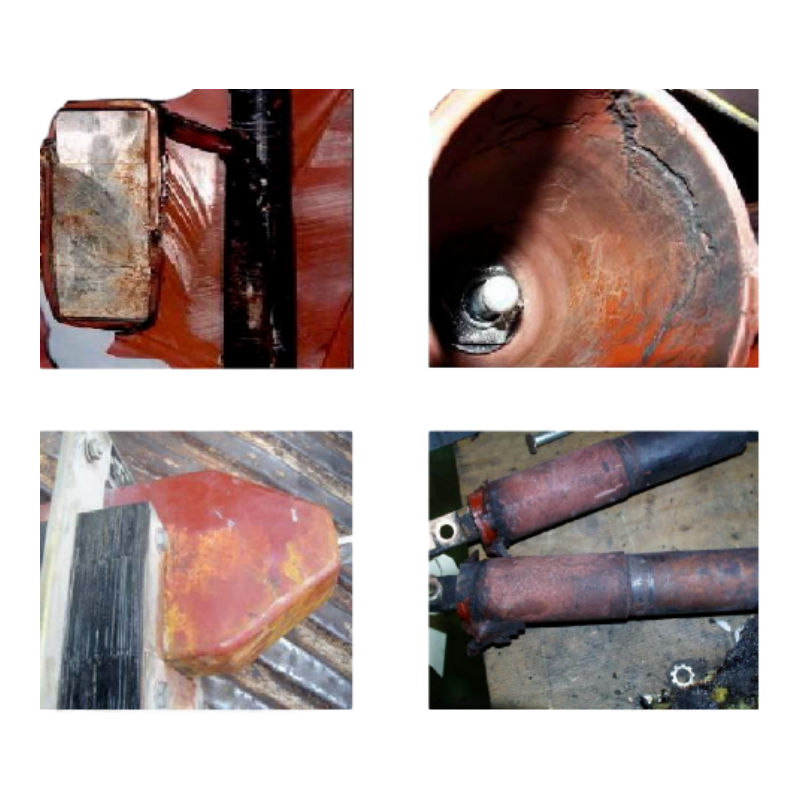
In addition to deterioration of insulation performance, partial discharge will bring other hazards including shortened equipment life, safety hazards, maintenance costs, environmental pollution, etc.
The partial discharge detection techniques mainly include gas presence method, electrical detection, electromagnetic detection, acoustic emission method, and optical detection.
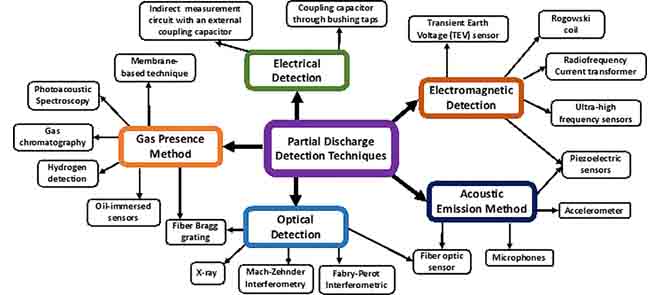
This part will only introduce the common partial discharge detection techniques that are TEV sensor, Ultrasonic Sensor, and HFCT/UHF sensor.
TEV (Transient Earth Voltage) sensor measures the transient voltage induced in the ground due to PD activity.
Ultrasonic Sensor detects the acoustic waves generated by PD activity.
HFCT(High-Frequency Current Transformer)/UHF(Ultra-High Frequency) Sensor detects the high-frequency current pulses associated with PD.
As for different partial discharge types, you need to use different partial discharge detection techniques. For example, the internal partial discharge needs transient Earth Voltage (TEV) detection instruments, while the surface partial discharge need Ultrasonic Emission detection instruments.
Regular detection: By regularly detecting the discharge inside the electrical cabinet, potential problems can be found in time and corresponding measures can be taken to repair them.
Selection and maintenance of insulating materials: select high-quality insulating materials, and regularly check and maintain the state of insulating materials to avoid damage from partial discharge.
Introduce isolation technology: Introduce isolation technology in the electrical cabinet to isolate the potential partial discharge area from other parts and reduce the risk of partial discharge in the electrical cabinet.
Equipment protection: Install over-current protection, over-temperature protection, or other online partial discharge monitoring system to cut off the current in time to prevent further development of faults and reduce fire risks and equipment damage.
Enhance operation and maintenance management: strengthen the daily operation and maintenance management of electrical cabinets, maintain a clean and dry environment, conduct regular inspections and maintenance, and eliminate potential failures in a timely manner.
Blue Jay PD3000 partial discharge monitoring system provides continuous monitors of partial discharge (PD) in equipment such as motors, switchgear, transformers, cables in switchgear & rotating machines, etc.
Our PD3000 partial discharge monitor is equipped with UHF sensor, TEV sensor, Ultrasonic sensor. These partial discharge sensors can detect partial discharge in high voltage equipment such as transformers, high voltage switchgear, GIS, and cable joints. Besides, it is easy to carry, fast measurement, strong anti-interference ability, and easy to use on site.
Main features of PD3000 partial discharge monitor
To know more about PD3000 or get the ideal partial discharge solution, please contact us instantly.
Features of PD3000
Related Articles

Partial Discharge Monitoring System for Switchgear A Partial Discharge

Cable Partial Discharge Detection and Monitoring Cable partial discharge
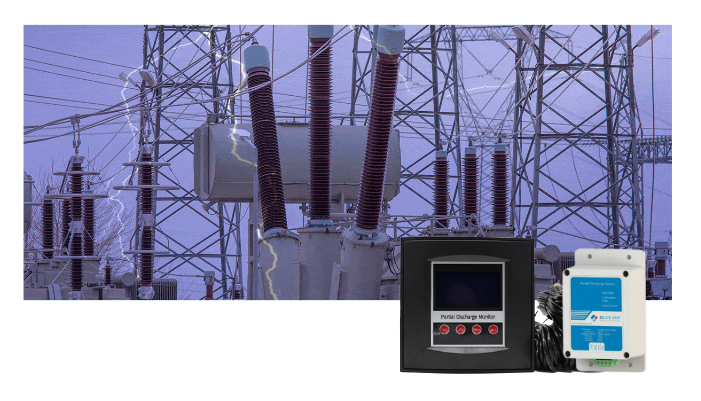
Online Partial Discharge Monitoring System for Transformer What is




